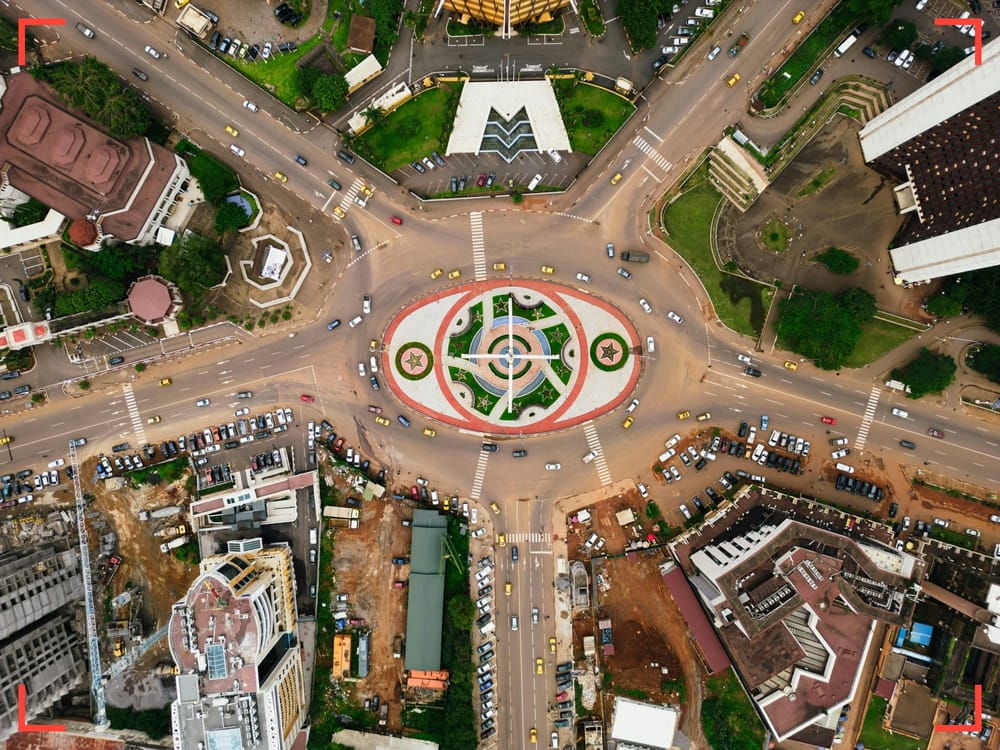Migration Policies & Foreign Aid SpecialREPORT
Linking Migration Policy with Foreign Aid: The Impact of Domestic Pressure | AUG 2025

Report Details
Initial Publish Date
Last Updated: 13 AUG 2025
Report Focus Location: Europe
Authors: AGC, MA
Contributors: GSAT
GSAT Lead: MF
RileySENTINEL provides timely intelligence and in-depth analysis for complex environments. Our global team blends international reach with local expertise, offering unique insights to navigate challenging operations. For custom insights or urgent consultations, contact us here.
Key Findings
- The 2015-2016 migration crisis saw a steep increase in illegal migration to Europe, challenging the bloc to develop a common migration approach.
- This crisis led to an immediate concern regarding the economic and security consequences, and the anti-refugee opinion increased significantly in many countries
- Political parties with a focus on more restrictive migration policies and the securitization of migration have won many elections or at least gained a strikingly new share of voters.
- Mainstream parties leading the governments of European countries have taken a tougher stance on migration in recent years, and are willing to link foreign aid with the cooperation of third countries on returns and readmissions.
- The New Pact reforms, adopted in April 2024, formalize this new approach to use foreign aid and other policy tools as a positive or negative lever in seeking cooperation to transfer asylum seekers to their countries of origin or to ‘safe third countries’
- European Official Development Assistance (ODA) is increasingly tied to migration outcomes, creating funding volatility for non-migration programs and accelerating localization through national partners.
- Cooperation with key origin and transit states is becoming explicitly transactional, with phased disbursements linked to identification rates, travel-document issuance timelines, acceptance of returnees, and compliance with rights safeguards.
- Implementation risks are pushing the EU to pair conditionality with targeted legal pathways, talent partnerships, and limited trade facilitation to sustain cooperation.
Summary
The recent increase in immigration to Europe following the end of the COVID-19 pandemic and Russia’s war in Ukraine since 2022 has led to worries that Europe will face similar challenges as during the migration crisis of 2015 and 2016. Political parties prioritizing migration policy and advocating cuts to foreign aid — aiming to address debt, ease pressure on welfare systems, and fund higher defense budgets — have gained momentum, winning recent elections in several countries and in the European Parliament. This development has put European countries and mainstream parties under pressure to take a tougher stance on migration, securitize their migration policies, and link foreign aid more directly with national interests.
It remains uncertain whether Europe will establish a common approach that is accepted by all countries, as there are already differing opinions regarding the conditionality of foreign aid and migration policy among various nations. NGOs need to prepare for adjustments in their operations along traditional routes and may also need to initiate projects in other regions impacted by the New Pact. They should anticipate increased funding volatility, as more resources will be redirected towards border management and the repatriation of returnees.
For more insights concerning the impact of increased defense spending on foreign aid budgets, kindly refer to our previous report here.
Current Events/Major Issue
In Spring 2024, the EU adopted the New Pact reforms, marking a sweeping shift in the bloc’s migration policy. This new agenda focuses heavily on the external dimension of migration policy and the cooperation of third countries. One of the tools under the New Pact is the Asylum Procedure Regulation (APR). which aims to extend the applicability of safe country clauses to increase returns. Following a review by the European Commission, member states were advised to have greater leeway in transferring asylum seekers to “safe third countries,” although the criteria for deeming such countries safe has been lowered. Policymakers argue that the New Pact will help secure the external borders, make procedures faster and more efficient, ensure the fair sharing of responsibility and a system of solidarity, and embed migration in international partnerships. It appears that the internal struggles of the EU lead to a focus on external factors, on which member states find more common ground to agree on compromises.
Critics warn that the EU risks becoming a fortress that seeks to pressure potential partners into conforming to its migration policies. For the next budget cycle, the EU has allocated €74 billion for migration, with €48 billion specifically designated for border enforcement. Meanwhile, many countries are reducing their humanitarian and development aid or redirecting portions of those budgets towards migration initiatives. Observers also say that Europe is increasingly using “migration conditionality”, meaning that the EU pressures third countries with incentives and punitive levers to cooperate on returns and take their citizens back. Development aid is an important lever in this approach, as it can be used both in a positive (more development aid for more cooperation) or in a punitive (less aid for less cooperation) sense. A recent example is the non-EU country Switzerland, which stopped its development aid to Eritrea after the country did not cooperate on forced returns. Given the current geopolitical situation and the pressure on increasing defense, social services, and other budgets, as well as growing debts in many countries, it is very likely that aid budgets will be further cut and predominantly used where they align with European migration and foreign objectives.
Figure 1. Asylum applications per EU+ country, 2024
Figure 2. Resettled persons in EU+ countries by reporting country and main citizenships, 2023-2024
Background
Europe saw a culmination of conflicts in the Middle East, predominantly, which led to the “migration crisis” of 2015 and 2016. The wake of the Arab Spring and the civil war in Syria caused many to leave their countries and migrate to Europe. While Frontex estimated the number of unauthorized crossings on different routes at around 10,000 per year from 2009 to 2013, that number rose to 1.82 million in 2015 and half a million in 2016. Half of the illegal immigrants came from Syria, and substantial numbers from Afghanistan and Iraq. Europe reacted with emergency measures and relocation schemes, and made a deal with Turkey. Thus, the migration influx declined, with the COVID-19 pandemic further reducing the flow. In 2021, migration began to increase gradually, and the numbers rose significantly again from 2022, following the Russian invasion of Ukraine and the end of the COVID-19 pandemic (Figure 3).
In the immediate aftermath of the migration crisis, public opinion on refugees shifted significantly in many countries, and governments came under pressure to act (Figure 4). Election results over recent years, e.g., the 2024 elections in Germany, Austria, France, and the European Parliament, showed a strong rightward drift. The results signaled the shift toward securitization and a hardline approach to migration. While public opinion on migration has remained relatively stable in recent years, right-wing parties have been more effective at mobilizing support than mainstream parties, which they have pressured to adopt a tougher stance. Immigration to Europe, the strain on welfare systems, and other geopolitical developments, such as the need to increase defense spending have put foreign aid under immense pressure to be cut and used more strategically for foreign policy objectives. The development is exemplified by the Nordic countries, historically known for their humanitarian approach to migration and asylum. Nowadays, Denmark is one of the European countries with the most restrictive measures on migration, and the other Nordic countries have also taken a more restrictive approach and linked foreign aid to national interests. European countries also assign significantly more in-country related costs for refugees to the ODA budgets (Figure 5).
Figure 3. Asylum applications per year in the EU (EU-27 from 2020 on)
Figure 4. Public opinion on refugees in European countries (% anti-refugee)
Figure 5. Share of in-donor refugee costs in Official Development Assistance (ODA) among DAC member countries
Analysis and Future Outlook
Europe’s move to link foreign aid with migration enforcement has crystallized into policy, not posture. The New Pact’s adoption in May 2024 hard-wired the practice of managing asylum and migration outside EU borders, introducing mandatory border procedures for low-recognition nationalities and a two-year implementation window, shifting the metrics of policy success toward expedited inadmissibility and post-rejection returns. This institutionalized externalization matters because returns are the system’s pressure valve: historically, the EU has returned only around one in five people ordered to leave, though Eurostat shows a temporary uptick to roughly 30% in Q1 2024. Whether that rise holds through 2026—when most Pact provisions take effect—will determine the real bite of conditionality.
Key actors
The Commission designs the framework, but with member states setting the operational tempo, diverging interests quickly surface. Italy, Austria, and Germany push for sharper conditionality, while Spain, Portugal, and Ireland hedge to preserve partnerships.
On the partner side, North African governments negotiate within EU-set conditionality. Tunisia’s Memorandum of Understanding (MoU) ties budget support to migration hardware; Mauritania’s 2024 partnership mobilizes funds to curb departures toward the Canaries; Egypt’s “strategic partnership” binds macro-finance to border management and legal pathways. Each agreement balances the EU’s offer against the political cost for the partner, with variables like payment timing, delivery of equipment, and compliance with human-rights clauses able to raise or lower the deal’s value as it is implemented.
Motivations
EU governments, under electoral and budget pressure, are using aid more transactionally: they redirect Official Development Assistance (ODA) to prevent departures towards Europe earlier, verifying identities, and securing readmissions. Inside the EU, “solidarity” measures to member states increasingly depend on delivering these external goals.
For partner countries, cooperation brings funding, investment, and mobility schemes; despite this, it can trigger backlash if seen as doing Europe’s policing, so they prefer step-by-step deals with milestones, multiple funders, and commitments they can pause or reverse.
Possible scenarios
From this vantage point, three plausible trajectories emerge. One is that tighter incentive structures could drive convergence: common benchmarks on identification rates, travel document issuance times, and acceptance of returnees could make aid disbursements more predictably contingent. In such a setting, the centre of gravity shifts from ad-hoc bargaining to rule-bound conditionality and monitoring. This raises legal exposure on safe-third-country designations but clarifies the price of non-compliance.
If convergence falters or proves politically costly, a second, messier pathway opens. Fragmentation would see capitals multiplying bilateral deals, producing overlapping obligations and “aid shopping,” while blurring lines between humanitarian, development, and security instruments. This splintering risks sending contradictory signals to partners and weakening collective leverage, even as it provides short-term political relief at home.
A third pathway is defined less by EU coordination than by the alternatives offered by partners. Pushback is credible if partners pivot to the Gulf, China, or multilaterals, forcing the EU to sweeten offers with mobility schemes and trade access. In that case, competition on terms—rather than compliance with EU-set benchmarks—becomes the dominant dynamic.
- Degrading Factors
- European electoral cycles fuel restrictive one-upmanship, narrowing the space for compromise with third countries.
- Budget pressures accelerate the linkage between ODA and returns, and tend to prompt abrupt, destabilizing cuts when return indicators stall.
- In partner countries, cooperation on readmissions remains politically costly and may be suspended, especially if rights safeguards are not followed.
- Litigation over the notion of “safe third country” and detention conditions slows the application of the Pact.
- Smuggling networks quickly bypass hard points, shifting routes and eroding the marginal effectiveness of returns.
- Intra-EU divergences between hard-line and partnership approaches blur signals and encourage parallel deals.
- Stabilization Factors
- With “control and partnerships” now the political zeitgeist, the approach holds steady even as governments change.
- The milestone-based sequencing of the Pact helps avoid brutal cuts and to link financing, capacity, and rights safeguards.
- More comprehensive packages — including targeted legal mobility, Talent Partnerships, and trade facilitation — offer more sustainable bargains.
- Jurisdictional and parliamentary guardrails clarify red lines and reduce reputational boomerang risk.
- Operational cooperation against smuggling and on assisted returns yields visible, measurable gains that help anchor public opinion.
Impact and Recommendations
The tightening link between aid and migration enforcement is unlikely to deliver an immediate, durable drop in arrivals. Nevertheless, it will likely reshape operations for NGOs, vendors, and field teams along traditional migration routes. In the near term, the risk lies less in a surge of flows than in political, legal, and financial aftershocks — such as stop-go disbursements tied to performance clauses, court injunctions on “safe third country” transfers, and reputational campaigns that shrink humanitarian space.
NGOs should expect funding volatility as envelopes are reprogrammed toward border management and returns, with more grants routed via interior or security ministries and through local CSOs under localization logics. Data-sharing demands for identification will raise privacy burdens; caseloads are likely to tilt to assisted return, reintegration, and community stabilization.
Private providers in identity, case management, surveillance, and border hardware are expected to see more tenders, but also lumpier pipelines and higher execution risks. Procurement will be paced by politics and litigation, payments tied to return outputs, and subject to tighter export-control, human-rights due diligence, and data-protection enforcement.
Field teams may face increasingly polarized and unstable environments, including denial-of-access incidents, short-notice evacuations, and legal grey zones. Given the hyper-politicization of the issue, they are also likely to face greater exposure to online harassment and public targeting, while local partners contend with heightened administrative pressure and an elevated risk of burnout.
Recommendations:
- For Private Sector Actors: Private actors should design contracts with staged payments tied to clear milestones, built-in rights to adjust or terminate quickly if conditions change, and strong privacy safeguards from the outset. They should also maintain a political-risk dashboard that monitors key indicators such as return-rate performance, ongoing legal challenges to migration procedures, and any delays or suspensions in agreed funding, allowing them to adapt operations before risks escalate.
- For NGOs and Humanitarian Organizations: NGOs should diversify beyond EU funding sources, formalize shared governance with local partners, and design modular programs that can pivot between protection, reintegration, and livelihoods as conditionality tightens or loosens. They are also encouraged to invest in anticipatory analysis with clear early warning indicators, and adopt proactive communication strategies to defend humanitarian space without entering the political fray, highlighting the impact and relevance of their programs and projects.
RileySENTINEL
Our RileySENTINEL platform delivers comprehensive global, regional, and country-specific situation reporting and analysis. Powered by the Riley Risk team, our Geopolitical & Security Analysis experts provide:
- Timely, on-the-ground intelligence
- In-depth analysis of high-risk environments and events
- Proactive insights to navigate volatile operational contexts
Our globally distributed advisors and analysts combine global reach with regional expertise and local insights, empowering clients with unique perspectives to make informed decisions in challenging environments.
Enhance Your Risk Management Strategy
For deeper insights or enhanced custom reporting tailored to your specific needs, we offer on-demand consultations. An expedited response option is typically available, based on our team and advisor availability.
To explore how our risk advisory services can strengthen your business operations and help you achieve more, schedule a call with the RileySENTINEL team using the service booking link below.
Expert Analysis On-Demand: Request Support
Leverage RileySENTINEL's expert team for deeper analysis and tailored insights:
- On-demand consultations with our global network of advisors
- Custom reports focused on your specific operational contexts
- Proactive risk mitigation strategies for volatile environments
- In-depth analysis of regional stability factors and future outlooks
- Expedited response options for time-sensitive inquiries
Click this link to be redirected to the support request page.
RileySENTINEL: Global Insights. Local Expertise.






